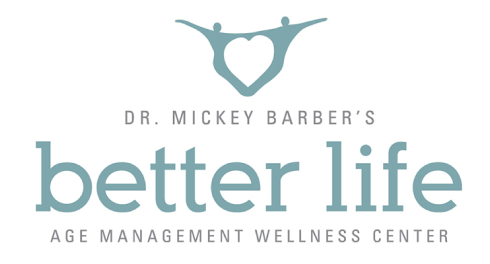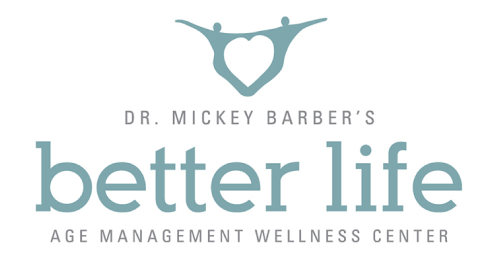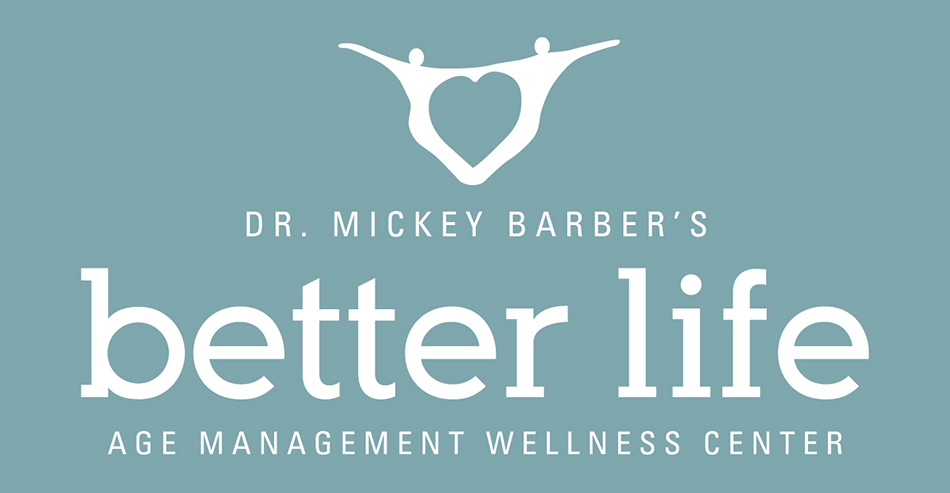
GAINSWave® Treatment In Seabrook Island, SC
Few things are guaranteed in life, but there is one thing that you can count on for sure: as time goes on, your body is going to age. While most men in their late teens through their twenties might feel invincible, it's only a matter of time before age starts to play a role in everyday life. Injuries take longer to recover from, hangovers take longer to dissipate, aches and pains become a normal part of life, and intimate time with your partner can be compromised. If you have experienced any of the symptoms above, don't worry - it's completely normal to slow down as you get older.
The question is, what are you going to do about the aging process? For years, men were told to just "live with it". The time to fight back is here, and there has never been a better opportunity to live your best life than now. Nobody understands the effects that aging can have on men but our team of professionals at Better Life do. That is why we invest all of our time developing innovative, effective men's health solutions: to give men a chance to change their future and live like they did while they were in their prime. If you're ready to take a stand against ED and live a more energetic, youthful life, know that you're not alone. At Better Life Carolinas, we are here to help by providing the most scientifically advanced treatments on the market today.

GAINSWave® Treatment In Seabrook Island, SC
When it comes to men's health, the topic of sex can still feel taboo, especially when there are performance issues involved. At Better Life Carolinas, we have heard just about every story you can imagine regarding erectile dysfunction or ED. So if you're embarrassed and angry about your performance in the bedroom, we understand how you're feeling. In the past, men had to take strange drugs or sign off on expensive surgeries to help correct their ED, adding to their feelings of shame and hopelessness.
The good news? If you're a man dealing with ED, you don't have to settle for antiquated treatments like those referenced above. There's a new product on the block: a revolutionary, non-invasive treatment that is the first of it's kind. It's called GAINSWave®, and you can bet your bottom dollar that it isn't like anything else you have tried before.
Unlike most ED treatments, this unique approach does not require drugs or surgery. Instead, it relies on high-frequency acoustic waves to open the penis's existing blood vessels, encouraging the growth of new blood vessels while eliminating micro-plaque. To put it simply, GAINSWave® increases blood flow and gives you a chance to reclaim your libido and live life like a man in his prime.
GAINSWave® isn't a sketchy, quick-fix pill found behind the glass at a gas station. It is a comprehensive erectile dysfunction treatment with an incredible 76% success rate. With virtually no side effects, it's no wonder that men throughout the Carolinas and across the United States trust GAINSWave® to solve their ED and Peyronie's disease problems.


How GAINSWave® Works
It might sound like GAINSWave® is too good to be true, but the fact is this kind of erectile dysfunction treatment in Seabrook Island, SC uses scientifically-backed, time-tested technologies and applications to improve male sexual performance. Technically referred to as Low-Intensity Extracorporeal Shockwave Therapy (LI-ESWT), our GAINSWave® procedure goes right to the crux of the issue. Low-intensity sound waves break up plaque formation in your penis while stimulating new blood vessel growth. These new blood vessels help get more blood to your penis, ultimately improving your ability to perform. This incredible treatment not only increases blood flow - it also causes new nerve tissues to grow, making your penis more sensitive and easily stimulated.
It all happens through a process called neurogenesis, which increases penis sensitivity. What sets GAINSWave® apart from others is the use of low-intensity sound waves to achieve increased blood flow and sensitivity. Because this procedure is completely non-invasive, you won't ever have to worry about expensive insurance claims or unsightly scarring. All you have to worry about is enjoying life like you used to, without having to undergo surgery or putting harmful substances in your body.
Here are some quick facts about Better Life Carolinas GAINSWave® treatments:
- For most men, you can expect to have between 6 and 12 GAINSWave® sessions
- Sessions typically take 15 to 20 minutes.
- GAINSWave® works by releasing growth factors in your penis tissue, which generates new blood vessels.
- GAINSWave® promotes healthy blood flow by breaking up plaque formation, giving men harder, stronger erections for longer periods of time.
- GAINSWave® also activates dormant stem cells, which leads to new cell growth in men.


Hidden Risks of Prescription Erectile Dysfunction Treatment
If you have ever wondered why GAINSWave® treatments are so popular with men, the answer is simple. Prescription drugs meant to help ED often come with side effects that can diminish your peace of mind and day-to-day life. While some men swear by the "little blue pill," many guys aren't aware of the hidden risks associated with drugs like Viagra. The following ailments can happen both in the short term and long term
If you are having problems with erectile dysfunction, you should understand why it's happening. The primary cause of ED is associated with a lack of blood flow to the penis, making erections difficult to get and maintain. Rather than relying on a prescription pill for a quick fix, many men are using GAINSWave® treatment in Seabrook Island, SC for a natural solution with no ill side effects. ED doesn't have to be your "new normal," and neither does suffering from strange side effects from popping too many "little blue pills."

GAINSWave®, COVID-19, and ED
The global COVID-19 pandemic has had a profound effect on the world. Over the last year, millions of Americans have had to change their lifestyles and alter daily routines to better protect themselves and their loved ones from the virus. While COVID-19 causes a litany of negative side effects, new research shows that men who contract the virus can triple their risk of developing erectile dysfunction. Because the human body is unfamiliar with this kind of virus, it responds by sending a large immune response. During this process, the body uses massive amounts of chemicals to eliminate the virus, causing horrible collateral damage in the form of cell destruction and inflammation.
Contracting COVID-19 and suffering from ED at the same time might sound like a death sentence. However, if you are a man experiencing ED during or after contracting the COVID-19 virus, don't lose hope.
Clinical trials have shown that shockwave therapy, better known as GAINSWave®, has been shown to lower inflammation and boost vascularity by creating angiogenesis and improving endothelial function. Simply put, GAINSWave® treatments can help reverse symptoms of ED brought on by COVID-19. To learn more about how GAINSWave® can help you get back to a normal sex life after developing COVID-19, we recommend contacting our office today.

GAINSWave® A Natural, Non-Invasive Treatment for Peyronie's Disease
Though Peyronie's Disease affects about 9% of men, it is a little-known disease that can cause physical and aesthetic issues. It is characterized by fibrous scar tissue, which forms underneath the surface of a man's penis. When this disease is left untreated or treated improperly, it can be very difficult for men to have a normal erection. This is because Peyronie's Disease can cause painful curvatures in the penis, making it nearly impossible for afflicted men to have sexual intercourse at all.
The cause of Peyronie's Disease is currently unknown. However, most cases stem from physical trauma like acute injuries after vigorous sex. Other causes include prostate surgery, autoimmune disorders, and family history. Unfortunately, traditional treatment options range from a "wait and see" approach to prescription drugs and even surgery.
P-Shot® Erectile Dysfunction Treatment in Seabrook Island, SC
Most guys will tell you that their penis is the most important part of their body. While that is not totally true from a physiological perspective, we get where they're coming from - after all, a man's penis plays a big role in his personal life and overall wellbeing. When a man has problems achieving and maintaining an erection, his quality of life can suffer dramatically, resulting in lower self-esteem and even depression. If you are a man and suffering from ED or Peyronie's Disease, you can rest easy knowing help is only a phone call away.
In addition to GAINSWave® treatments, Better Life Carolinas also offers the Priapus Shot or P-Shot® for short. Originally used to treat wounds and sports injuries, our P-Shot® is an all-natural treatment that fortifies your body through cellular repair and rejuvenation. P-Shot® treatments have shown very promising results for men who have suffered from prostate cancer, enlarged prostates, the side effects of surgery, drug side effects from prescription pain killers, and even diabetes.
Benefits of Better Life Carolinas' P-Shot® include:
- Increased blood flow to the penis
- Improved stamina during sexual activities
- Improvement and possible resolution of penile curvature issues caused by Peyronie's Disease
- Increased penis sensitivity
- Improvements to penis girth and length
You might be asking yourself, "How does the P-Shot® work?"
This ED solution works by using platelet-rich plasma or PRP from your own body. The proteins and growth factors released by the large number of platelets activate your stem cells, which begins cellular regeneration and repair wherever the PRP are used in your body. Tissue repair in your penis is further aided by the formation of new blood vessels and collagen production.
In many cases, men who use the P-Shot® to correct erectile dysfunction or the effects of Peyronie's Disease can resume sexual activity a few hours after the treatment is applied.


Start Your Free Consultation Today
Tell us about your case and how you prefer to communicate. We will reply by phone or email and provide a free legal consultation within one business day.

Latest News in Seabrook Island, SC
Seabrook Island developing marsh front protection plan to fight erosion
Melissa Rademakerhttps://www.live5news.com/2025/02/13/seabrook-island-developing-marsh-front-protection-plan-fight-erosion/
SEABROOK ISLAND, S.C. (WCSC) - Seabrook Island is working with a local coastal consulting firm to develop a plan to monitor, protect and restore its marsh to fight erosion.The Seabrook Island Environment and Wildlife Committee is in the final stages of reviewing plan drafts that balance property protection and marsh preservation since most of Seabrook Island’s marsh front lies on private property.“What we’re seeing out in the marshes and in the tidal ditches over the last three years, actually is a lot of eros...
SEABROOK ISLAND, S.C. (WCSC) - Seabrook Island is working with a local coastal consulting firm to develop a plan to monitor, protect and restore its marsh to fight erosion.
The Seabrook Island Environment and Wildlife Committee is in the final stages of reviewing plan drafts that balance property protection and marsh preservation since most of Seabrook Island’s marsh front lies on private property.
“What we’re seeing out in the marshes and in the tidal ditches over the last three years, actually is a lot of erosion that has been my main concern,” Dean Moor, a Seabrook Island Environment and Wildlife Committee member, says.
Nicole Elko, of Elko Coastal Consulting, is developing the marsh front management plan. She says Seabrook does have one water level monitor that reports higher waters and more king tides in recent years.
“The impetus for the plan was some erosion that the community has been experiencing along the marsh front, and the need to just monitor and document what is going on the marsh side. So, in South Carolina, we do a great job of monitoring our beaches. We measure and collect a lot of data. Very little information is collected on the along our marsh front,” Elko says.
Her firm is working with the town to change that. The management plan suggests partnering with Kiawah Conservancy to fully map the ‘critical line’ or official edge of the marsh. Then, the town can collect data like water movement and erosion to implement restoration precisely where it’s needed.
“A state permit is required to do any construction or altering below the critical line and then down in the marsh. So the town has an immediate opportunity to make changes, implement ordinances, construct projects upland of that critical line,” Elko says.
Her management plan suggests some regulatory changes for the town like transitioning the Agricultural Zoning to a more appropriate district along the marsh front to reduce development pressure and protect sensitive ecosystems. It also instructs the town to reduce impermeable surfaces in the community to minimize runoff into the marsh. But the Seabrook marsh front is unique compared to its neighbor islands.
“Most of the Seabrook marsh front is actually privately held, so that presents a new challenge as the town decides how to manage those lands, and a lot of the decisions and land management on Seabrook involves several entities,” Elko says.
One of the major players on the private island is the Seabrook Island Property Owners Association.
“My hope is that once we’ve got the clear Marsh plan, we can get with SIPOA, which is, I guess, the administrative part of the island, and make sure that they’re on the same page, and we adopt both the town and SIPOA adopt the recommendations for how to protect and restore some of the marshes,” Moor says.
Moor says as a property owner, he appreciates that the plan puts town-led efforts into place for private owners to follow so as to protect their property along the marsh front.
Due to the private ownership of much of the marsh front on homeowner property, the plan involves a lot of community engagement, like incentivizing homeowners to meet certain standards. For example, the plan suggests showcasing living shoreline projects on public lands such as oyster bed restoration and marsh front vegetative buffers.
Based on future data and grant application abilities, the plan says to work towards offering mini grants to marsh front property owners to support the installation of green infrastructure and living shorelines.
“We are seeing evidence of additional mud flats, decreased habitat and ecosystem health and also marsh erosion,” Elko says. “And the erosion piece is really because of development right the marsh normally could migrate. The oxbows of the marsh channels can move around, but when there’s private property involved, now that becomes a problem. So in order to address those elements, the plan is devised to do that.”
Elko Coastal Consulting and the Town of Seabrook Island have been collaborating on the marsh management plan for a few months. The Environment and Wildlife Committee is expected to review a final draft of the plan at its next meeting and will pass the plan along to the town council once it approves a draft.
“Part of it is if we do nothing, and we start destroying, or the climate and sea level rise starts destroying property, we’re going to have a little bit of an issue here,” Moor says. “It’s a real joy to sit in areas where we can look out over the marsh at different times during the day, see the marsh, see the watering of the high tide and marsh that sunset, see the marsh turn gold. It’s a real treat.”
Copyright 2025 WCSC. All rights reserved.
Disclaimer:


Service Areas

Copyright 2025 by Dr. Mickey Barber's Better Life
Notice of Privacy Practices
